- Home
- Jackie French
Macbeth and Son Page 17
Macbeth and Son Read online
Page 17
Ingeborg: Thorfinn’s wife Ingeborg may have married Malcolm after Thorfinn’s death. As Thorfinn was so much older than Malcolm, his first wife would also have been much older than Malcolm, so in my story I’ve made Ingeborg (or Ingibjorg) Thorfinn’s much younger, second wife.
Language: The people in this book spoke Gaelic. I’ve had them talk modern English, as though I had translated directly from the Gaelic, rather than sprinkle modern Scottish words throughout the book.
A length: Distances were measured in lengths. A ‘length’ was the length of a horse.
Lulach: There is no record of who Lulach married, but it was probably an alliance with someone like Thorfinn’s daughter. Lulach had one or two sons and a daughter. His son Melsnectai became Mormaer of Moray, but was banished by Malcolm and later became an abbot. The other son may also have been mormaer at one time, and Lulach’s daughter’s son, Angus, became mormaer as well.
Macbeth: Macbeth’s real name was probably MacBheatha. ‘Mac’ means son, though we know Macbeth’s father was called Findlaech, so by then ‘MacBheatha’ was possibly a name in its own right. Findlaech had been Mormaer of Moray before Lulach’s father, Gillecomgain, was elected. Macbeth’s mother, Doada, was probably the daughter of King Malcolm II.
Marriage by proxy: Often royal couples who lived far apart were married with someone else standing in for the bride or groom. That way they didn’t have to risk having their bride or groom die or change their mind while they were on their journey, leaving them without any status in their new country.
Moray: Moray, or Moireabh, meant ‘seaboard settlement’. It was the largest province in Alba, and was much bigger than the modern county of Moray.
Mormaer: A mormaer was a chief, elected by the people of a clan to rule them. (Even ancient Scottish fishing crews elected their captain, then agreed to obey him totally as long as he was captain.) Anyone who was related to the previous mormaer could stand for election, even a distant cousin. Women could be elected too, though this was rare. The chiefs in turn elected the king. By Macbeth’s time kings were usually elected from Atholl or Moray, the two most powerful clans.
Chiefs and kings nominated their heir, or tanist, and trained the tanist to rule after them. A tanist still had to be elected by the people or the chiefs, after the mormaer’s or king’s death. But mostly the appointed tanist was elected—after all, they had been trained as an apprentice leader.
The king or mormaer had to follow Scottish law, which had been brought over by the colonists from Ireland. If he displeased the chiefs he could be asked to resign—just as the chiefs had to resign if they displeased their people.
Most disputes in Alba were settled by arbitration—both sides had to agree that the solution was just. So the king and chiefs had to be legal experts as well as leaders.
The Orkneys: The islands off the north of Scotland, held in those days by Thorfinn, son of Sigurd ‘the Corpulent’. The Orkneys were cold, windy islands, but they controlled a rich fishing and whaling trade. They became part of Scotland in 1471.
Raths: Raths were like small villages, with a main hall, outbuildings and cottages, but where everyone usually ate at the hall. Sometimes everyone slept at the hall too, but in other places most people had their own tiny cottages. A larger rath might be a dün, or fortress.
St Ilf: There is no St Ilf or any school called St Ilf’s. I deliberately used a nonexistent saint so no one would think the school in this book is based on a real school, or that the cheating episode ever happened. Nothing in this book is based on any living person, TV show, or school…certainly not any that I’ve ever been associated with.
Scotland: In Lulach’s day Scotland was known as Alba, though it was beginning to be called by the Latin name Scotia, from the Irish scotti or ‘skirmishers’ who had settled there. Alba had been settled early in the third century by colonists from northeast Ireland, who intermarried with the Picts already in Scotland. Their language, Gaelic, was still the main language in Lulach’s time, and Irish laws were still in force. Most of the people were fishermen, farmers, or cattle herders. No one owned land. Instead, on the Feast of Nabach (from Nābaicheachd, meaning ‘neighbourliness’), everyone drew lots to see what bit of land they’d farm the next year. Some of the land was kept to support the sick, old and poor.
Eating Like Macbeth
In Macbeth’s time there weren’t great differences between the way rich and poor people ate. In the Scottish halls everybody ate from the same big pot—the poorest person had the same food as the leader of the clan. I’ve assumed that when Macbeth was king he and his court ate in the English and European fashion, sitting at tables and eating from big trenchers of bread, with two people sharing a trencher. (Only the king and other important people had a trencher to themselves.) But as far as I know no one at the time wrote down how the Scottish court ate, so maybe Macbeth and his court kept to their old ways.
A clan’s wealth mostly depended on how many cattle it had—and stealing your neighbour’s cows was almost a sport. The female cows were usually kept for their milk, butter and cheese, not for meat. But apart from the best bulls, all male cattle were killed before they were a year old; it took a lot of hay to keep a cow through the cold winters. They were either eaten fresh at a feast, or dried or salted to stop the meat from going bad before it could be eaten. Wild deer, hare and birds like partridges, grouse or mallards were also hunted and eaten. But meat was pretty much food for feasts and celebrations.
Instead of meat, most people ate a lot of fish and shellfish from the coast or the lochs (lakes). The fish were either eaten fresh, or dried, salted or smoked to preserve them. Many days of the year were religious ‘fish days’ too, when no one was allowed to eat meat. Cheese was another staple food.
Root vegetables like parsnips, swedes and white turnips were grown, as well as hardy kail (kale), which was a bit like an ancient cabbage. ‘New’ vegetables like leeks, onions, broad beans, radish and garlic may have reached Scotland by Macbeth’s time too. Women gathered wild berries and wild greens like nettles, sorrel and syboes (spring onions), as well as edible seaweeds. The yellow turnips eaten with today’s haggis didn’t come to Scotland till the eighteenth century. The other modern Scottish staple, potatoes, hadn’t come to Scotland in Macbeth’s day either.
Wheat, oats and barley were grown in the more sheltered areas, but most places were too cold and windswept, so people traded cattle for grain from the south. Scotland had the earliest known waterpowered mills for grinding oats and other grains into flour, and they probably existed in Macbeth’s day, though most households would have had their own small ‘quirm’, a mortar and pestle, for grinding their own grain.
Oats and barley were made into porridge by grinding them and boiling them with water. Often everyone ate the porridge from the same pot, dipping their cow’s-horn spoon in to get some porridge then dipping the spoonful of porridge in milk or cream, sometimes sweetened with honey, or in butter. Porridge was also cooked with kale or wild herbs. A drink called brose was a bit like a very thin porridge, and another drink called sowans was made from fermenting oat husks in water.
Most cooking was done in a single big pot in the fireplace. Meat and fish were roasted over the fire on a spit, and oatcakes or bannocks were baked on the hot hearthstone by the fire (there were no ovens in ancient Scotland). Barley or oat bannocks were large, soft and round. Oatcakes were harder and thinner, and could be dried in front of the fire so they’d keep for weeks or months when you were travelling, or out fishing, or at war. Special hard oatcakes of oatmeal and butter were made for babies to cut their teeth on, like modern rusks. Salty oatcakes were made at Halloween; if a young man or woman ate one they were supposed to dream of whom they’d marry. Special soft oatcakes made with cream and honey (and later sugar) were made for celebrations when a couple was married or a baby was born.
Oatcakes
• 2 cups of rolled oats, or oatmeal flour if you can find it in a health-food shop. If not, grind the
oats to flour the traditional way, between two rocks. (Wash the rocks well first!)
• half a tablespoon of salt
• 2 tablespoons of butter
• a little cold water or buttermilk
Mix the oatmeal flour with the butter and salt, then add a dribble of cold water or buttermilk and mix again, and keep adding dribbles of water till the dough is moist enough to form a ball.
Use your hands to take small bits of the dough. Roll each one into a ball, then press it as flat as you can and place it on a greased oven tray. When all the dough is used up, put the tray into a cool oven and bake at about 100oC for 40 minutes to an hour, or till the oatcakes are firm and just starting to turn pale brown.
Eat them hot or cold with lots of butter and cheese. If you want to store them, leave them propped up by the fire for several days till they are very hard and crisp.
Brose
• 2 tablespoons of rolled oats
• 1 cup of cold water, meat stock or buttermilk
• cream and honey, or butter
Cover the rolled oats with the liquid and leave for an hour or two. Then mix them into the liquid with a spoon or your fingers.
Strain out the lumpy bits. Add a dash of cream and honey, or heat up the brose and stir in a lump of butter until it melts.
Kail Brose
• 1 cup of chopped kail (kale) or cabbage if you can’tget kail. (You can buy kail seeds in Australia, but it can be hard to buy the leaves.)
• 1 litre of water or beef stock
• 1 tablespoon of oatmeal
Simmer the kail in the stock till soft. Put the oatmeal on a tray in a hot oven till just pale brown, which should take about three minutes. (It would have been browned on the hearthstone in Macbeth’s day.) Serve the soup in bowls and scatter the toasted oatmeal on top just before you eat it.
Green Cheese
Green cheese wasn’t coloured green. It was a fresh cheese that could be eaten after a couple of days. Other cheeses were made into ‘hard cheese’ that would last for months or years.
• 1 litre of milk, yoghurt or whipped cream
• 1 junket tablet (optional)
• a colander
• some very clean cloth
• string
Leave the milk in a bowl, covered by a cloth, till it thickens. If you are afraid it may go bad in our hot climate before this happens, use a junket tablet to thicken it instead according to the directions on the packet. This will take a couple of hours. Or use yoghurt or whipped cream instead, which are already thick.
Line the colander with the cloth. Pour in the thick milk. Leave it for about an hour then gather the edges of the cloth together and tie them with the string. Hang the wet bag somewhere cool where all the liquid dripping out won’t make a mess. (I hang mine from the tap in the bath or from the shower.) Leave it till all the liquid has run out and it feels firm. This will take between two and four days.
Unwrap your cheese and keep it in the fridge till you need it. Eat it as it is, or on oatcakes. You can also eat it with fresh or puréed fruit. (I like mine on crackers with Vegemite—definitely not known in Macbeth’s time.)
Clotted Cream
The thick cream we eat today is mostly whipped. Lulach and Macbeth would have eaten clotted cream on oatcakes or wheat bread, or with wild berries.
Take a bucket of milk fresh from the cow. Leave it on the hearthstone by the fire for a day and a night. The cream will rise to the top, and get firmer and thicker. When it’s so thick you can almost slice it, scoop it off.
Butter
Lulach and Macbeth would have eaten a lot of butter, either on oatcakes or barley cakes or in their porridge. The easiest way to make butter today is to half-fill the bowl of an electric beater with cream, then just keep beating till the cream separates into lumps of butter and thin ‘buttermilk’. Use a couple of spoons to press the buttery lumps together and press out the buttermilk. (Too much buttermilk in the butter quickly turns it sour.)
If you want to store your butter for a few years, pack it into a wooden bucket, put the wooden lid on firmly and bury it in your nearest cold peat bog or swamp.
About the Author
Jackie French is a full-time writer who lives in rural New South Wales. Jackie writes fiction and non-fiction for children and adults, and has columns in the print media. Jackie is regarded as one of Australia’s most popular children’s authors. Her books for children include: Rain Stones, shortlisted for the Children’s Book Council Children’s Book of the Year Award for Younger Readers, 1991; Walking the Boundaries, a Notable Book in the CBC Awards, 1994; and Somewhere Around the Corner, an Honour Book in the CBC Awards, 1995. Hitler’s Daughter won the CBC Younger Readers Award in 2000 and a UK National Literacy Association WOW! Award in 2001. How to Guzzle Your Garden was also shortlisted for the 2000 CBC Eve Pownall Award for Information Books and in 2002 Jackie won the ACT Book of the Year Award for In the Blood. In 2003, Diary of a Wombat was named an Honour Book in the CBC Awards and winner of the 2002 Nielsen BookData/ Australian Booksellers Association Book of the Year—the only children’s picture book ever to have won such an award. More recently, in 2005 To the Moon and Back, which Jackie co-wrote with her husband, Bryan Sullivan, won the CBC Eve Pownall Award for Information Books and Tom Appleby, Convict Boy, My Dad the Dragon and Pete the Sheep were also named Notable Books. Jackie writes for all ages—from picture books to adult fiction—and across all genres—from humour and history to science fiction.
Visit Jackie’s website
www.jackiefrench.com
or
www.harpercollins.com.au/jackiefrench
to subscribe to her monthly newsletter
Visit www.AuthorTracker.com for exclusive information on your favorite HarperCollins author.
OTHER TITLES BY JACKIE FRENCH
Wacky Families Series
1. My Dog the Dinosaur • 2. My Mum the Pirate
3. My Dad the Dragon
4. My Uncle Gus the Garden Gnome
5. My Uncle Wal the Werewolf
6. My Gran the Gorilla
7. My Auntie Chook the Vampire Chicken (June 2006)
8. My Pa the Polar Bear (January 2007)
Phredde Series
1. A Phaery Named Phredde
2. Phredde and a Frog Named Bruce
Phredde and the Zombie Librarian
Phredde and the Temple of Gloom
Phredde and the Leopard-Skin Librarian
Phredde and the Purple Pyramid
Phredde and the Vampire Footy Team
8. Phredde and the Ghostly Underpants
Animal Stars Series
1. The Goat that Sailed the World (August 2006)
Outlands Trilogy
In the Blood • Blood Moon • Flesh and Blood
Historical
Somewhere Around the Corner
Dancing with Ben Hall and Other Yarns
Soldier on the Hill • Daughter of the Regiment
Hitler’s Daughter • Lady Dance • Valley of Gold
How the Finnegans Saved the Ship • The White Ship
Tom Appleby, Convict Boy
They Came on Viking Ships
Fiction
Rain Stones • Walking the Boundaries • Summerland
The Secret Beach • Beyond the Boundaries • A Wombat Named Bosco
The Book of Unicorns • The Warrior—The Story of a Wombat
Missing You, Love Sara • Dark Wind Blowing
Ride the Wild Wind: The Golden Pony and Other Stories
Picture Books
Diary of a Wombat • Pete the Sheep
Josephine Wants to Dance (November 2006)
Non-fiction
How the Aliens from Alpha Centauri Invaded
My Maths Class and Turned Me into a Writer
How to Guzzle Your Garden • The Book of Challenges
Stamp, Stomp, Whomp (and Other Interesting Ways to Get Rid of Pests)
The Fascinating History of Your Lunch<
br />
Big Burps, Bare Bums and Other Bad-Mannered Blunders
To the Moon and Back • The Secret World of Wombats
How to Grow Your Own Spaceship (February 2007)
Copyright
Angus&Robertson
An imprint of HarperCollinsPublishers, Australia
First published in 2006
This edition published in 2010
by HarperCollinsPublishers Australia Pty Limited
ABN 36 009 913 517
www.harpercollins.com.au
Copyright © Jackie French 2006
The right of Jackie French to be identified as the author of this work has been asserted by her in accordance with the Copyright Amendment (Moral Rights) Act 2000.
This work is copyright. Apart from any use as permitted under the Copyright Act 1968, no part may be reproduced, copied, scanned, stored in a retrieval system, recorded, or transmitted, in any form or by any means, without the prior written permission of the publisher.
HarperCollinsPublishers
25 Ryde Road, Pymble, Sydney, NSW 2073, Australia
31 View Road, Glenfield, Auckland 10, New Zealand
77–85 Fulham Palace Road, London W6 8JB, United Kingdom
2 Bloor Street East, 20th floor, Toronto, Ontario M4W 1A8, Canada
10 East 53rd Street, New York NY 10022, USA
National Library of Australia Cataloguing-in-Publication data:

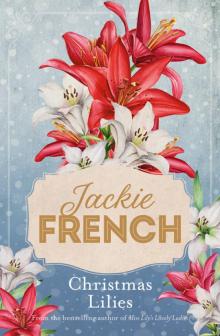 Christmas Lilies
Christmas Lilies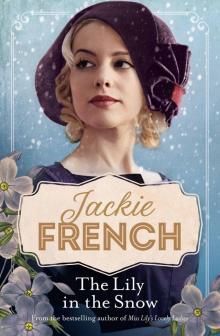 The Lily in the Snow
The Lily in the Snow The Schoolmaster's Daughter
The Schoolmaster's Daughter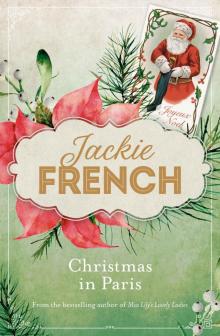 Christmas in Paris
Christmas in Paris Lilies, Lies and Love
Lilies, Lies and Love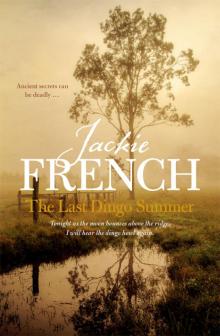 The Last Dingo Summer
The Last Dingo Summer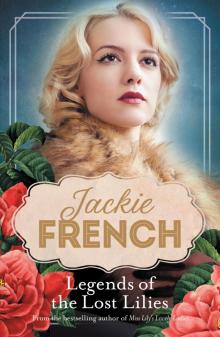 Legends of the Lost Lilies
Legends of the Lost Lilies Just a Girl
Just a Girl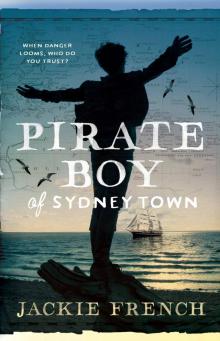 Pirate Boy of Sydney Town
Pirate Boy of Sydney Town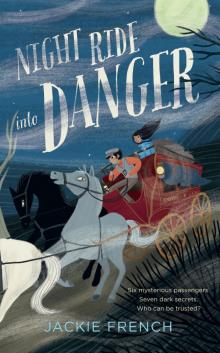 Night Ride into Danger
Night Ride into Danger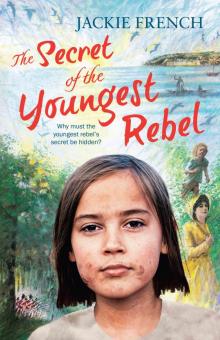 The Secret of the Youngest Rebel
The Secret of the Youngest Rebel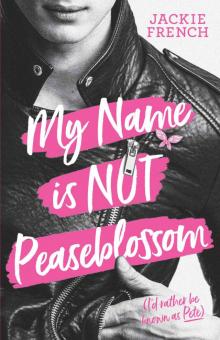 My Name is Not Peaseblossom
My Name is Not Peaseblossom Goodbye, Mr Hitler
Goodbye, Mr Hitler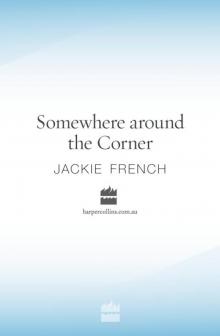 Somewhere around the Corner
Somewhere around the Corner Dingo: The Dog Who Conquered a Continent
Dingo: The Dog Who Conquered a Continent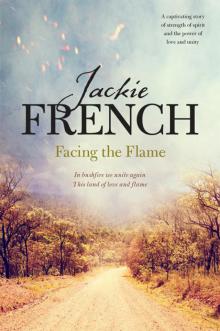 Facing the Flame
Facing the Flame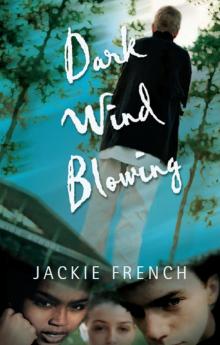 Dark Wind Blowing
Dark Wind Blowing Pennies For Hitler
Pennies For Hitler They Came On Viking Ships
They Came On Viking Ships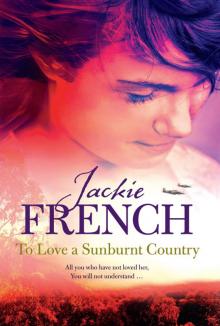 To Love a Sunburnt Country
To Love a Sunburnt Country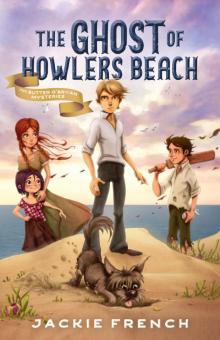 The Ghost of Howlers Beach
The Ghost of Howlers Beach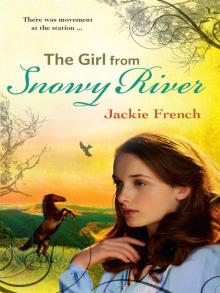 The Girl from Snowy River
The Girl from Snowy River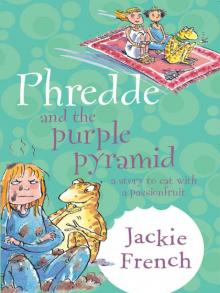 Phredde and the Purple Pyramid
Phredde and the Purple Pyramid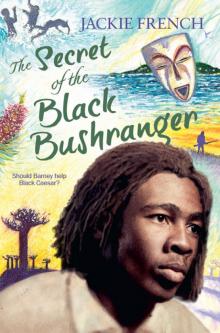 The Secret of the Black Bushranger
The Secret of the Black Bushranger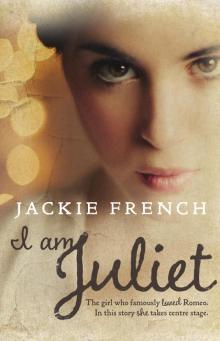 I Am Juliet
I Am Juliet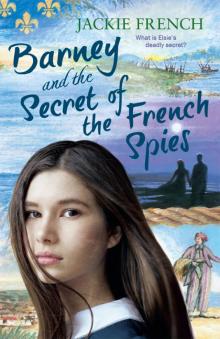 Barney and the Secret of the French Spies
Barney and the Secret of the French Spies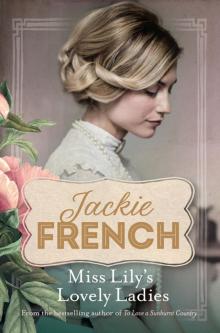 Miss Lily’s Lovely Ladies
Miss Lily’s Lovely Ladies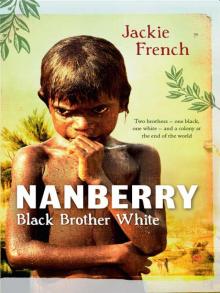 Nanberry
Nanberry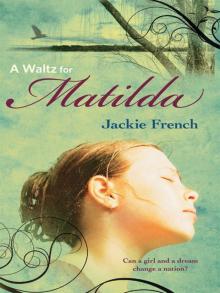 A Waltz for Matilda
A Waltz for Matilda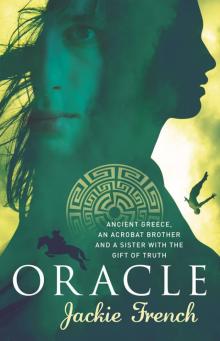 Oracle
Oracle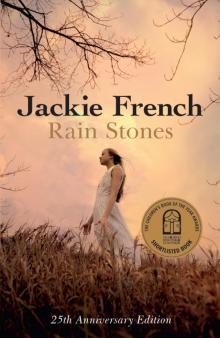 Rain Stones 25th Anniversary Edition
Rain Stones 25th Anniversary Edition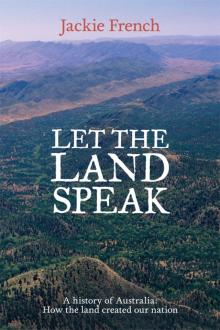 Let the Land Speak
Let the Land Speak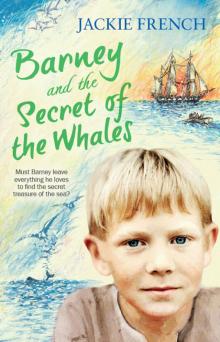 Barney and the Secret of the Whales
Barney and the Secret of the Whales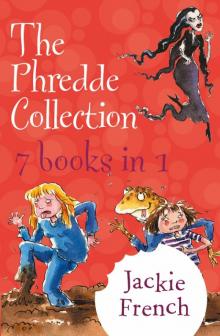 The Phredde Collection
The Phredde Collection Year in the Valley
Year in the Valley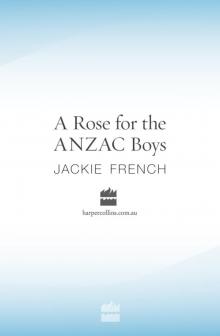 A Rose for the Anzac Boys
A Rose for the Anzac Boys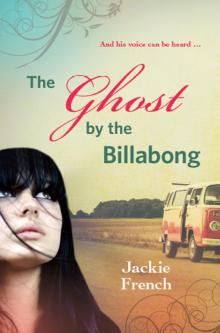 The Ghost by the Billabong
The Ghost by the Billabong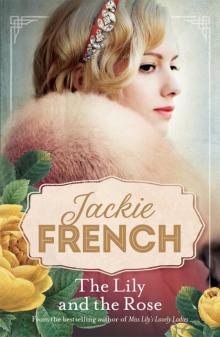 The Lily and the Rose
The Lily and the Rose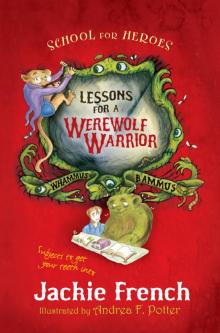 Lessons for a Werewolf Warrior
Lessons for a Werewolf Warrior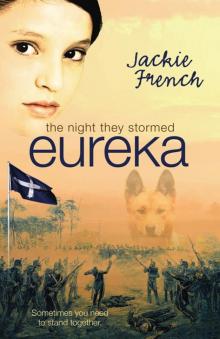 The Night They Stormed Eureka
The Night They Stormed Eureka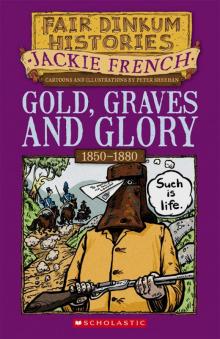 Gold graves and glory
Gold graves and glory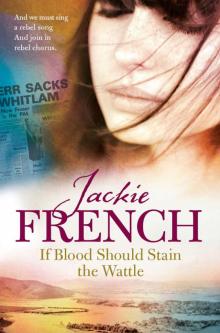 If Blood Should Stain the Wattle
If Blood Should Stain the Wattle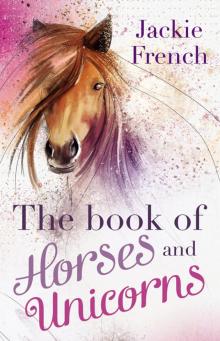 The Book of Horses and Unicorns
The Book of Horses and Unicorns Ophelia
Ophelia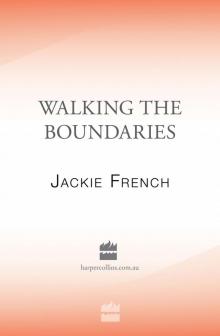 Walking the Boundaries
Walking the Boundaries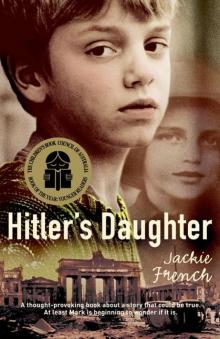 Hitler's Daughter
Hitler's Daughter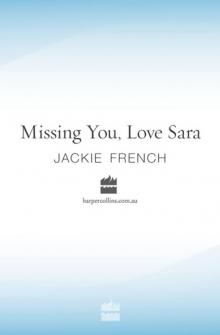 Missing You, Love Sara
Missing You, Love Sara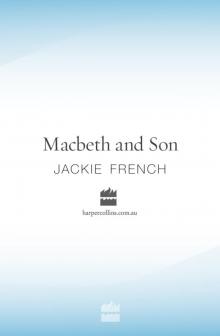 Macbeth and Son
Macbeth and Son Wonderfully Wacky Families
Wonderfully Wacky Families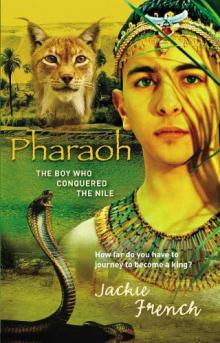 Pharaoh
Pharaoh Dance of the Deadly Dinosaurs
Dance of the Deadly Dinosaurs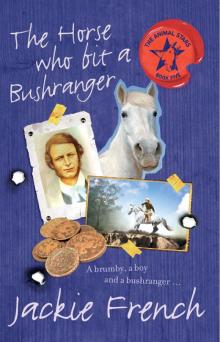 The Horse Who Bit a Bushranger
The Horse Who Bit a Bushranger One Big Wacky Family
One Big Wacky Family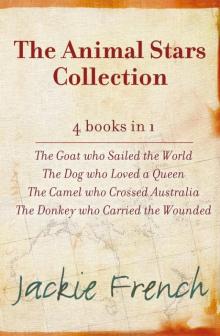 The Animal Stars Collection
The Animal Stars Collection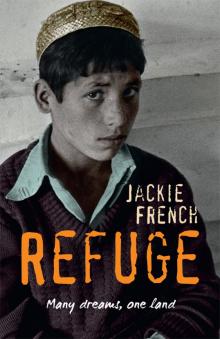 Refuge
Refuge Third Witch
Third Witch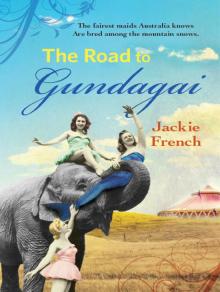 Down the Road to Gundagai
Down the Road to Gundagai